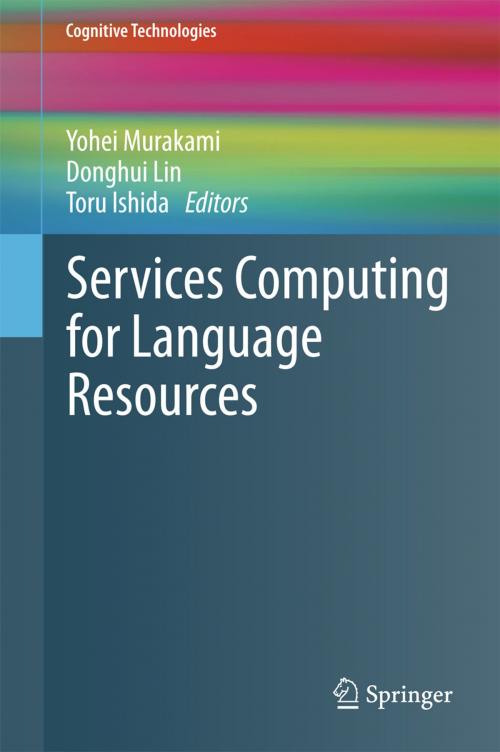Services Computing for Language Resources
Nonfiction, Computers, Advanced Computing, General Computing, Internet| Author: | ISBN: | 9789811077937 | |
| Publisher: | Springer Singapore | Publication: | February 23, 2018 |
| Imprint: | Springer | Language: | English |
| Author: | |
| ISBN: | 9789811077937 |
| Publisher: | Springer Singapore |
| Publication: | February 23, 2018 |
| Imprint: | Springer |
| Language: | English |
Describing the technologies to combine language resources flexibly as web services, this book provides valuable case studies for those who work in services computing, language resources, human–computer interaction (HCI), computer-supported cooperative work (CSCW), and service science. The authors have been operating the Language Grid, which wraps existing language resources as atomic language services and enables users to compose new services by combining them. From architecture level to service composition level, the book explains how to resolve infrastructural and operational difficulties in sharing and combining language resources, including interoperability of language service infrastructures, various types of language service policies, human services, and service failures.
The research based on the authors’ operating experiences of handling complicated issues such as intellectual property and interoperability of language resources contributes to exploitation of language resources as a service. On the other hand, both the analysis based on using services and the design of new services can bring significant results. A new style of multilingual communication supported by language services is worthy of analysis in HCI/CSCW, and the design process of language services is the focus of valuable case studies in service science. By using language resources in different ways based on the Language Grid, many activities are highly regarded by diverse communities.
This book consists of four parts: (1) two types of language service platforms to interconnect language services across service grids, (2) various language service composition technologies that improve the reusability, efficiency, and accuracy of composite services, (3) research work and activities in creating language resources and services, and (4) various applications and tools for understanding and designing language services that well support intercultural collaboration.
Describing the technologies to combine language resources flexibly as web services, this book provides valuable case studies for those who work in services computing, language resources, human–computer interaction (HCI), computer-supported cooperative work (CSCW), and service science. The authors have been operating the Language Grid, which wraps existing language resources as atomic language services and enables users to compose new services by combining them. From architecture level to service composition level, the book explains how to resolve infrastructural and operational difficulties in sharing and combining language resources, including interoperability of language service infrastructures, various types of language service policies, human services, and service failures.
The research based on the authors’ operating experiences of handling complicated issues such as intellectual property and interoperability of language resources contributes to exploitation of language resources as a service. On the other hand, both the analysis based on using services and the design of new services can bring significant results. A new style of multilingual communication supported by language services is worthy of analysis in HCI/CSCW, and the design process of language services is the focus of valuable case studies in service science. By using language resources in different ways based on the Language Grid, many activities are highly regarded by diverse communities.
This book consists of four parts: (1) two types of language service platforms to interconnect language services across service grids, (2) various language service composition technologies that improve the reusability, efficiency, and accuracy of composite services, (3) research work and activities in creating language resources and services, and (4) various applications and tools for understanding and designing language services that well support intercultural collaboration.















